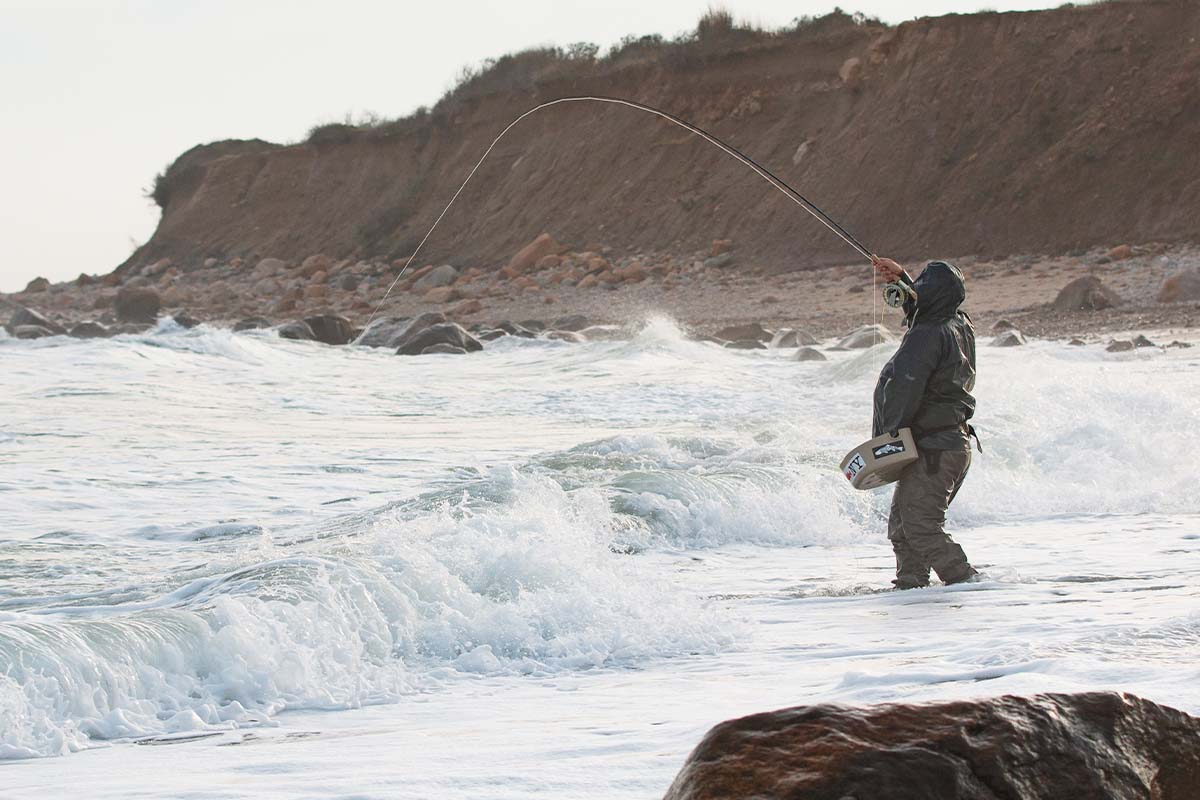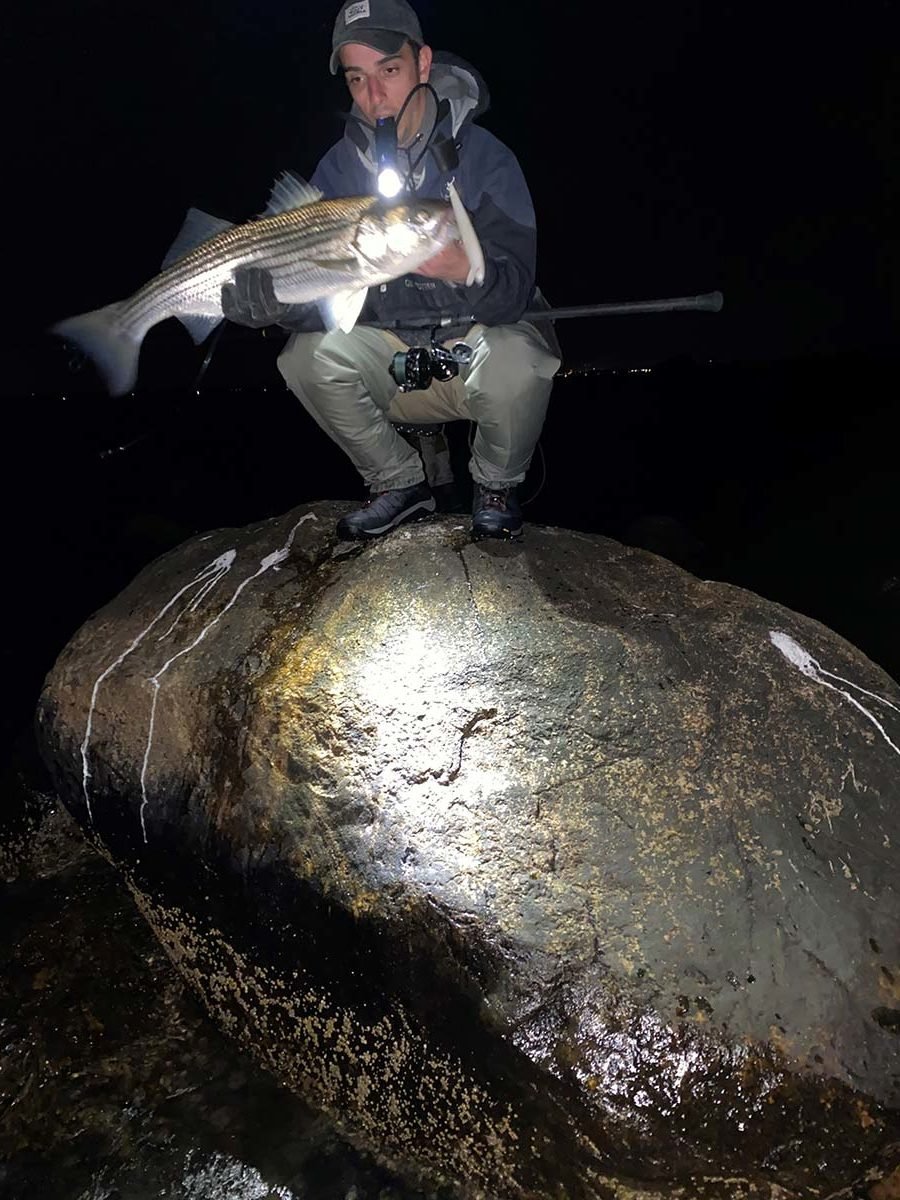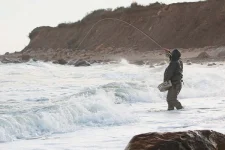The Eastern Edge: Mastering Montauk to North Fork Waters During the Fall Blitz
By Captain Mike "Truck" Thompson | 30+ Years of Long Island Surf FishingPrime Fishing Forecast: October 3-17, 2024
The fog lifts off Montauk Point like a curtain being drawn back, revealing the churning white water that's been calling my name for three decades. It's 4:47 AM, and I'm crawling out of my F-250's cab where I've spent another night, the smell of coffee mixing with salt air as I gear up for what could be the best day of the fall run. My back's stiff from sleeping on the bench seat, but when you see those sand eels getting worked just beyond the lighthouse rocks, comfort becomes irrelevant. This is why I live in my truck from October through November – because when the conditions align on this stretch from Shinnecock to the North Fork, you need to be here, ready to strike.
This eastern edge of Long Island isn't for weekend warriors or fair-weather casters. From the treacherous rocks of Montauk Point to the challenging currents of Plum Gut, this stretch demands every ounce of skill, experience, and equipment you've got. I've watched countless anglers get humbled by these waters – guys who can catch stripers all day in Jamaica Bay suddenly find themselves fishless when facing the raw power of the open Atlantic colliding with Long Island Sound.
Right now, as of October 3rd, we're sitting in prime territory. Water temps are holding steady in the 62-65°F sweet spot, the sand eel schools are thick from Shinnecock to Orient Point, and the bass are moving through in waves that would make your grandfather weep with joy. The next fourteen days are going to separate the real surf rats from the pretenders, and I'm here to give you every advantage I can.

Dawn patrol at Montauk Point - where legends are made and pretenders are exposed
The Proving Grounds - Why Montauk Separates the Pros
Montauk Point isn't just the end of Long Island – it's where the Atlantic Ocean shows you who's boss. The unique geography here creates a convergence zone where the open ocean meets the protected waters of Block Island Sound, generating currents, rips, and feeding opportunities that exist nowhere else on the East Coast. Understanding this dynamic is what separates the guys who catch fish from those who just cast into the void.The point itself acts like a massive underwater mountain, forcing deep water up and creating upwellings that concentrate baitfish. When you combine this with the tidal flow around the point, you get a constantly changing puzzle of feeding zones. The key is reading the water – and I mean really reading it, not just looking for the obvious white water that every tourist can spot.
Watch for the subtle color changes where clean blue water meets the greenish inshore flow. That seam line, especially on the south side during an incoming tide, can hold massive schools of bass working sand eels. The trick is positioning yourself to intercept them as they move along the structure. I've seen forty-inch fish caught within twenty yards of guys who went home empty-handed simply because they didn't understand the current flow.
Montauk Current Reading Guide:
• Incoming tide: Fish the south side rips and lighthouse rocks
• Outgoing tide: Focus on north side eddies and back-wash areas
• Wind against tide: Creates prime feeding conditions but dangerous casting
• Slack tide: Work the deeper holes and structure points
The lighthouse area gets all the attention, but smart anglers know when to walk away from the crowds. Turtle Cove, just a quarter-mile west, can produce monster bass when the main point is blown out. The back beaches from Ditch Plains to Hither Hills don't get the pressure, and when the wind's howling from the northeast, they can be your salvation. I've had some of my best nights walking empty beaches while everyone else fought for space at the point.
Current Conditions & 14-Day Forecast
The sand eel bite that's dominated our fall has been nothing short of spectacular. These large, 4-6 inch eels are concentrated in massive schools from Montauk all the way around to Orient Point, and the bass are locked onto them like heat-seeking missiles. Unlike the smaller spearing that show up later in the season, these sand eels are substantial enough to attract the big girls – I'm talking about fish in the 35-45 inch class that have some real shoulders on them.Water temperatures are critical right now. We're sitting in that goldilocks zone of 62-65°F that triggers aggressive feeding. Any warmer and the fish get lethargic; any cooler and they start thinking about moving south. The good news is that this temperature range should hold through at least October 15th based on current weather patterns, giving us nearly two full weeks of prime conditions.
Solunar Prime Times (October 3-17):
• Major periods: 2 hours around moonrise/moonset
• Minor periods: 1 hour around moon overhead/underfoot
• Best overall days: Oct 6, 10, 14 (new moon approach)
• Night fishing peak: Oct 8-12 (minimal moon interference)
Wind is going to be your biggest variable over the next two weeks. We're looking at a pattern of southwest winds 10-15 mph for the first half of October, shifting to northwest 15-20 as we move toward mid-month. That northwest flow is going to clean up the south shore beaches and create those gin-clear conditions that make sight-casting to surface-feeding bass possible.
Tide-wise, we've got some excellent windows coming up. The October 6th new moon brings spring tides with strong flows that really activate the baitfish. My money days are going to be October 7-9, when you combine those strong tides with minimal moon for night fishing. The incoming tides from 10 PM to 2 AM during this window should be absolutely lethal if you're in the right spots.

When sand eel schools concentrate, trophy bass like this follow - the rewards for those who master the eastern edge
Location Breakdown - East End Hotspots
Montauk Point State Park & Lighthouse Area
The crown jewel remains the rocks below the lighthouse, but fishing it effectively requires timing and positioning that most anglers never master. The productive zone extends from the actual point rocks westward about 200 yards to where the beach starts to curve north. Early morning incoming tides are prime, especially that first hour of legal light when the bass are still feeding aggressively on the surface.Parking can be a nightmare, so I'm usually here by 4 AM to claim my spot. The 4WD permit gets you closer access, but even then you're walking gear over rocks that have claimed more tackle than I care to count. Bring a headlamp, wear cleats, and for God's sake, don't turn your back on the water. I've seen too many good anglers get caught by a rogue wave because they were focused on their tackle box instead of the ocean.
Turtle Cove & Caswell Beach
When Montauk Point is a zoo or blown out by wind, Turtle Cove becomes your ace in the hole. This protected pocket holds bait when everywhere else is scoured clean, and the bass know it. The key structure here is the submerged rocks that extend out from the western end of the cove. Fish the edges of these rocks during moving water, and don't overlook the deeper water in the center of the cove during slack tides.Turtle Cove Tactics:
- Use lighter tackle than the main point – 20-30 lb class is sufficient
- Focus on dawn and dusk when bass move shallow to feed
- Swimming plugs and soft plastics outproduce metals here
- Wade carefully – bottom drops off quickly beyond the visible rocks
Hither Hills & The Walking Beaches
The stretch from Hither Hills State Park eastward toward Montauk offers miles of fishable water with minimal pressure. This is where I go when I want to get away from the crowds and work structure that most anglers never even see. The key is understanding how the beach changes with different tide stages – bars that are productive on the dropping tide become dead zones when the water's high.You'll need to walk here, sometimes up to a mile to reach the best water, so pack light but smart. A single rod setup with a selection of plugs and metals will cover most situations. Look for deeper holes, channel cuts, and subtle points that concentrate baitfish. The bass use these features as ambush points, especially during low-light periods.
Shinnecock Inlet - Inlet Tactics
Shinnecock Inlet is a completely different animal from the open ocean fishing. Here, it's all about reading current flow and positioning yourself where the bass can trap baitfish against structure. The west jetty is the more productive side for surf fishing, but it requires careful attention to boat traffic and timing your casts between the parade of charter boats heading in and out.Shinnecock Inlet Timing:
• Prime fishing: 2 hours before to 1 hour after high tide
• Best current: Moderate incoming flow (not screaming)
• Structure focus: Jetty tips, channel edges, back-eddy pockets
• Safety note: Always fish with a partner at inlet locations
Orient Point & Plum Gut
The very tip of the North Fork opens up an entirely different fishery. Plum Gut – the channel between Orient Point and Plum Island – creates some of the most intense current flows on the East Coast. When conditions are right, this area can produce non-stop action, but it demands respect and skill to fish safely.The key to Plum Gut is understanding the tide phases. Fish the edges of the main current flow, not the washing-machine center. Look for eddies behind structure, back-wash areas where bait gets trapped, and the seam lines where fast water meets slower water. Heavy jigs and metals are essential here – the current will laugh at your favorite swimming plug.

Mastering the technical aspects of surf fishing is essential for success in challenging eastern waters
North Fork Sound Side Opportunities
Don't overlook the Long Island Sound side of the North Fork, especially when the ocean side is blown out. Areas like Greenport, Orient Beach State Park, and the various creek mouths along the sound can hold surprising numbers of bass, especially during the later stages of the fall migration. These protected waters fish best during stable weather when the bass are less pressured and more willing to feed in shallow water.Advanced Techniques for Challenging Waters
Reading bird activity becomes critical when you're dealing with the massive water expanses of the eastern end. Gannets diving three miles offshore might seem irrelevant, but they're often marking bait schools that will move inshore with the tide. Terns working closer to shore indicate active feeding, while gulls picking at the surface usually mean the main action has moved on.The key is distinguishing between different bird behaviors and what they tell you about what's happening below the surface. Frantic diving by multiple species indicates a blitz in progress – drop everything and get there fast. Scattered, lazy feeding suggests smaller fish or the tail end of activity. No birds at all often means you need to prospect deeper water or move to a different area entirely.
Sand Eel Pattern Lure Selection:
• Hogy Sand Eel 5-7 inches (pearl, white, olive)
• Albie Snax 4 inch (natural sand eel color)
• Deadly Dick metals 2-4 oz (chrome/blue)
• Bomber Long A 15A (olive back/white belly)
• Swimming plugs: slow retrieve, erratic action
Your tackle setup needs to match the conditions you're facing. In the heavy water around Montauk Point, I'm running 11-foot rods with 50-pound braid and 40-pound fluorocarbon leaders. This isn't finesse fishing – it's about getting your lure where it needs to be and having the muscle to turn a big fish away from structure. Lighter tackle might be sporting, but it's not practical when you've got one shot at a fish of a lifetime.
Night fishing requires a complete mindset shift. Your casting accuracy becomes more important than distance, and your ability to feel what your lure is doing becomes paramount. I fish heavier lures at night – they cast better in wind and give me better contact with what's happening down there. Swimming plugs get switched out for metals and jigs that I can feel ticking bottom or swimming through the strike zone.
Safety in these challenging conditions isn't optional – it's survival. Always fish with a partner when possible, carry a GPS and communication device, and never turn your back on the ocean. I've seen too many close calls over the years, usually involving anglers who got so focused on fishing that they forgot they were standing on wet rocks next to an ocean that doesn't care about their personal record book.

The right lure selection can make the difference between success and failure in Montauk's demanding waters
Bait Patterns & Migration Intel
The sand eel concentrations we're seeing right now are some of the heaviest I've witnessed in recent years. These schools are holding in 20-40 feet of water during the day, then moving shallow to feed at night. The bass have keyed in on this pattern, which is why dawn and dusk fishing has been so productive – you're intercepting them as they follow the bait into casting range.Bunker are still around but in smaller, more scattered pods compared to the massive schools we saw in early September. Look for them in protected areas like the back sides of Gardiner's Bay and Noyack Bay, where they're less affected by the increasing wave action. When you do find working bunker, the fishing can be explosive, but it's becoming more of a treasure hunt as the season progresses.
Cold fronts are your friend during this period. Each weather system that drops temperatures by 10-15 degrees triggers a feeding response that can last for 24-48 hours. The bass seem to sense the seasonal changes and feed aggressively before the next system moves through. Mark your calendar for October 9th and 14th – both dates show strong cold front potential that should turn on the bite.
The Next 14 Days - Day-by-Day Analysis
October 6-8: New moon period with strong tides. Focus on Montauk Point and Shinnecock Inlet during prime solunar windows. October 10-12: Post-frontal conditions with northwest winds. Fish the back beaches and protected spots. October 14-16: Another cold front approaching. This could be the peak of the two-week period – be ready to fish multiple locations as conditions change rapidly.The eastern edge of Long Island demands everything you've got – skill, determination, proper equipment, and above all, respect for the conditions you're facing. But for those willing to pay their dues, to sleep in trucks and walk miles of empty beach, to study weather patterns and tide charts like they're scripture, the rewards are beyond description. This is where legends are made and stories are born that will be told around tackle shops for decades.
The next fourteen days offer a window into what fall surf fishing can be when everything aligns. Don't waste it sitting at home watching reports from others. Get out there, put in the time, and maybe – just maybe – you'll understand why some of us never really leave the beach, even when we're not fishing.

